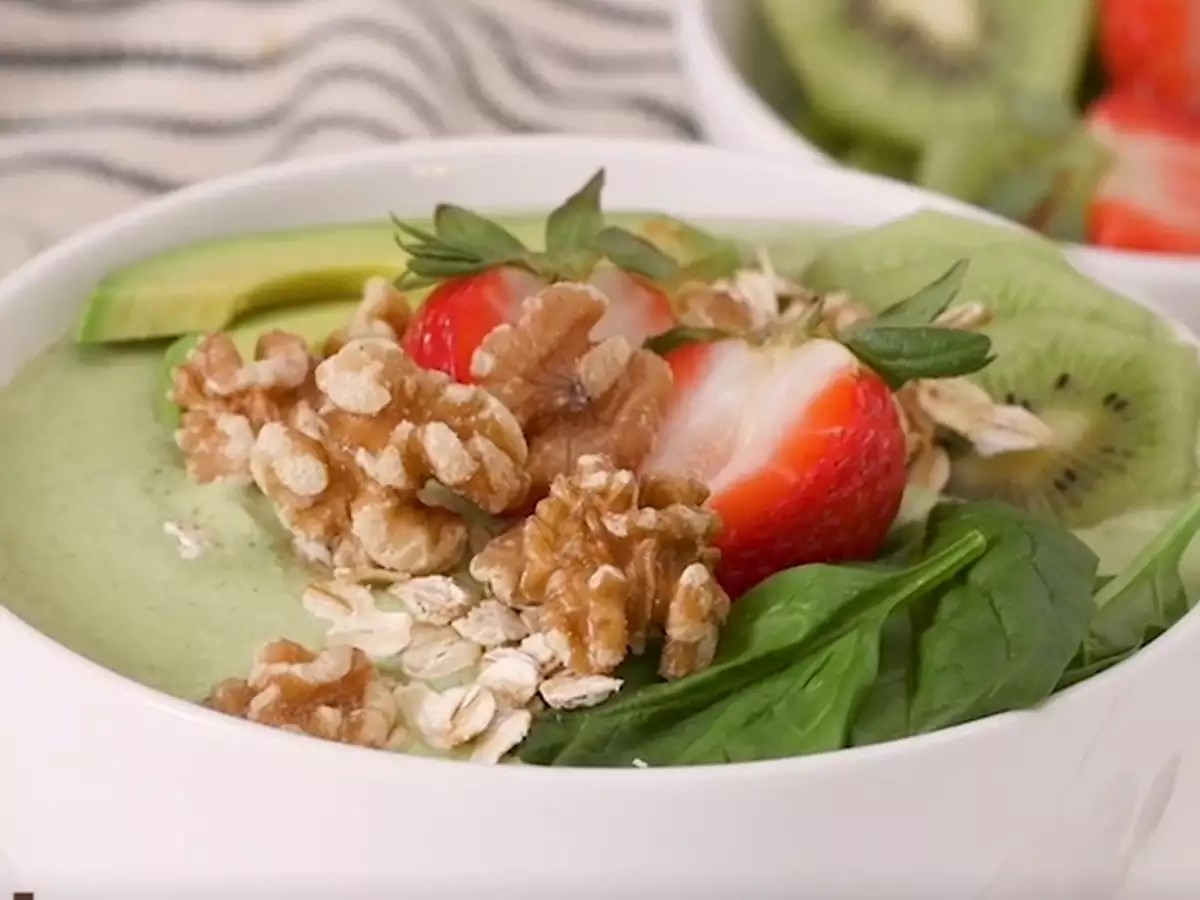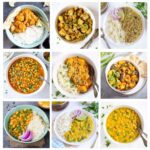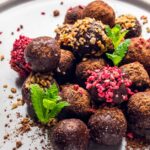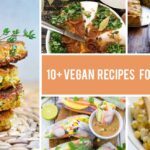Dive into the vibrant world of vegan smoothie bowls! This isn’t just about blending fruit; it’s about crafting a culinary masterpiece, a symphony of textures and flavors that tantalizes the taste buds and delights the eyes. From selecting the perfect blend of frozen fruits and creamy plant-based milks to arranging a dazzling array of toppings, we’ll guide you through each step, transforming simple ingredients into a truly unforgettable breakfast, brunch, or snack. Prepare to unlock the secrets to creating a smoothie bowl so aesthetically pleasing and delicious, it’ll become your new favorite healthy indulgence.
We’ll explore a spectrum of ingredients, from the nutritional powerhouse of berries and the creamy sweetness of bananas to the unique textural additions of seeds and nuts. Learn to master the art of blending, achieving that perfect smooth and creamy consistency without icy chunks. We’ll unveil creative topping combinations and visually stunning arrangement techniques, transforming your smoothie bowl from a simple meal into a work of art. Get ready to experiment with diverse flavor profiles and discover your signature vegan smoothie bowl creation.
Essential Ingredients for a Vegan Smoothie Bowl
Creating the perfect vegan smoothie bowl is an art, a delightful blend of vibrant colors, textures, and flavors. The key lies in selecting the right ingredients to achieve a nutritious and satisfying breakfast or snack. This section will explore the essential components, guiding you towards smoothie bowl mastery.
Vibrant Fruits for a Nutritious Base
A foundation of fresh, flavorful fruits is crucial for a truly vibrant smoothie bowl. The right fruits not only provide sweetness but also a wealth of vitamins and antioxidants.
- Berries (Strawberries, Blueberries, Raspberries): Bursting with antioxidants, these little jewels are packed with vitamin C, fiber, and manganese, contributing to a healthy immune system and digestive health. Imagine their jewel-toned hues mingling in your bowl, a visual feast as much as a nutritional one.
- Mango: This tropical delight offers a luscious sweetness and a creamy texture. Rich in vitamin C and beta-carotene (a precursor to vitamin A), mango supports healthy vision and skin.
- Banana: A classic smoothie ingredient, bananas provide natural sweetness and creaminess, acting as a binding agent for the bowl. They’re a good source of potassium, essential for maintaining healthy blood pressure.
- Pineapple: Its tangy sweetness adds a unique tropical flair. Pineapple contains bromelain, an enzyme that aids digestion, and is a good source of vitamin C.
- Avocado: While not technically a fruit in the botanical sense, avocado adds a luxuriously creamy texture and a healthy dose of monounsaturated fats, beneficial for heart health. Its vibrant green color adds a beautiful contrast to other ingredients.
Plant-Based Milks for Creamy Texture
The choice of plant-based milk significantly impacts the smoothie bowl’s texture and nutritional profile.
- Almond Milk: Offers a subtly sweet and nutty flavor with a relatively thin consistency. It’s a good source of vitamin E and calcium (when fortified).
- Coconut Milk (full-fat): Provides a rich, creamy texture and a distinctly tropical flavor. It’s higher in fat and calories than other options but also offers a good source of healthy fats and electrolytes.
- Oat Milk: A creamy and slightly sweet option with a mild flavor. Oat milk is often fortified with calcium and vitamin D, making it a nutritious choice.
Unique Additions for Enhanced Flavor and Nutrition
Elevating your smoothie bowl beyond the basics involves incorporating unique ingredients that boost both flavor and nutritional value.
- Chia Seeds: These tiny powerhouses are packed with omega-3 fatty acids, fiber, and antioxidants. They also add a pleasant subtle texture.
- Hemp Seeds: A complete protein source, hemp seeds offer a nutty flavor and a good source of omega-3 and omega-6 fatty acids, along with essential minerals.
- Cinnamon: A dash of cinnamon adds warmth and sweetness while offering potential blood sugar-regulating benefits.
- Nut Butter (almond, peanut, cashew): Adds creaminess, healthy fats, and protein. The nutty flavor complements many fruit combinations.
- Cacao Nibs: A rich, chocolatey addition that provides antioxidants and a satisfying crunch.
Vegan Protein Powder Comparison
Adding vegan protein powder boosts the protein content of your smoothie bowl, aiding satiety and muscle recovery. Different powders offer varying nutritional profiles.
| Protein Powder Type | Protein (g/scoop) | Fiber (g/scoop) | Added Sugar (g/scoop) |
|---|---|---|---|
| Pea Protein | 20-25 | 3-5 | 0-2 |
| Brown Rice Protein | 15-20 | 2-4 | 0-1 |
| Soy Protein | 20-25 | 1-3 | 0-2 |
Building the Perfect Base

Creating the ideal vegan smoothie bowl begins with a flawlessly blended base. The perfect consistency, somewhere between a thick milkshake and soft-serve ice cream, hinges on the precise ratio of liquid to frozen fruit and the careful selection of your ingredients. This section will guide you through mastering this crucial first step.
The ideal ratio of liquid to frozen fruit for a smoothie bowl is generally 1:2 or 1:3, liquid to frozen fruit. This means for every one cup of liquid, you’ll use two to three cups of frozen fruit. However, this is a guideline; the exact ratio might need slight adjustments depending on the type of fruit and desired consistency. For example, using very ripe bananas might require slightly less liquid, as they naturally add more moisture.
Frozen Fruit Selection and its Impact
The choice of frozen fruit significantly impacts both the texture and flavor profile of your smoothie bowl. Berries, such as strawberries, blueberries, and raspberries, lend a vibrant color and a naturally sweet, tart flavor. Their relatively small size contributes to a smoother, less chunky final product. Bananas, on the other hand, add creaminess and sweetness, creating a richer, more decadent texture. Mangoes offer a tropical twist, introducing a vibrant yellow-orange hue and a naturally sweet, slightly tangy flavor. Their slightly fibrous texture contributes to a thicker, more substantial bowl. Experimenting with different combinations of frozen fruits allows for endless flavor and texture variations.
Blending Techniques for a Smooth Texture
Effectively blending frozen fruit is key to achieving a smooth, ice-chunk-free smoothie bowl. Start by adding your liquid first to the blender, followed by the frozen fruit. This helps the blades engage with the fruit more effectively from the beginning, preventing the fruit from clumping together and forming ice chunks. Blend on a low speed initially, gradually increasing the speed as the mixture begins to combine. If necessary, stop the blender periodically to scrape down the sides, ensuring all ingredients are evenly incorporated. For extra smooth results, consider using a high-powered blender designed for crushing ice. Avoid over-blending, as this can cause the smoothie to become too thin or watery.
Step-by-Step Guide to Preparing the Smoothie Bowl Base
- Gather your ingredients: Choose your desired frozen fruit (aiming for about 2-3 cups), and select your liquid (1 cup, possibly less depending on the fruit). Consider using plant-based milk (almond, soy, oat), coconut water, or even a little fruit juice.
- Add liquid first: Pour your chosen liquid into your blender.
- Add frozen fruit: Add the frozen fruit to the blender, ensuring it’s evenly distributed.
- Blend on low: Start blending on a low speed, allowing the fruit to begin breaking down.
- Increase speed gradually: Slowly increase the speed to medium, then high, blending until a smooth, creamy consistency is achieved. Pause and scrape down the sides as needed.
- Adjust consistency: If the mixture is too thick, add a little more liquid; if it’s too thin, add a small amount of frozen fruit and blend again briefly.
Toppings & Garnishes
Transforming your vegan smoothie bowl from a nutritious meal into a vibrant work of art involves the strategic selection and arrangement of toppings and garnishes. These additions not only enhance the visual appeal but also contribute layers of flavor and texture, creating a truly satisfying and memorable experience. The right toppings can elevate a simple smoothie bowl into a culinary masterpiece.
Choosing the right toppings is key to a delicious and visually stunning smoothie bowl. Consider a variety of textures and flavors to create a multi-sensory experience. Think crunchy, chewy, sweet, and tart elements that complement the base flavor of your smoothie. The arrangement of these toppings is equally important, as it significantly impacts the overall aesthetic.
Five Creative and Healthy Toppings
The following five toppings offer a diverse range of flavors and textures, ensuring a captivating sensory experience for your vegan smoothie bowl:
- Toasted Coconut Flakes: Offering a delightful crunch and a subtly sweet, tropical flavor, toasted coconut flakes provide a textural contrast to the creamy smoothie base. Imagine the golden brown flakes scattered across the vibrant green of a spinach-based bowl.
- Chia Seeds: These tiny powerhouses add a pleasant, slightly nutty flavor and a satisfyingly chewy texture. Their nutritional value is a bonus, contributing to the overall health benefits of the bowl. Picture the glistening black seeds sprinkled generously over the surface.
- Sliced Strawberries: The juicy sweetness and vibrant red color of sliced strawberries provide a beautiful contrast and a refreshing burst of flavor. Imagine the deep red contrasting beautifully with a creamy, light-colored smoothie base.
- Roasted Pepitas (Pumpkin Seeds): Roasted pepitas deliver a satisfying crunch and a subtly nutty, earthy flavor, adding a wholesome element to the bowl. Their vibrant green color also adds visual interest. Envision the scattered green contrasting with the other colors in your bowl.
- Banana Chips: These provide a sweet, caramelized flavor and a satisfyingly crunchy texture, offering a delightful contrast to the smoother elements of the bowl. The golden-brown color adds warmth and visual appeal.
Three Methods for Attractive Topping Arrangement
The artful arrangement of toppings significantly enhances the visual appeal of your smoothie bowl. Here are three effective methods:
- The Spiral Method: Start from the center of the bowl and arrange toppings in a spiral pattern, moving outwards. This creates a visually engaging design that guides the eye and showcases the variety of textures and colors.
- The Layered Method: Create distinct layers of toppings, starting with the larger items at the bottom and progressively layering smaller items on top. This technique provides a sense of depth and dimension to the bowl.
- The Cluster Method: Group similar toppings together in small clusters around the bowl. This method creates visual interest through repetition and contrast while allowing each topping to stand out.
Edible Flowers and Herbs as Garnishes
Edible flowers and herbs elevate the smoothie bowl to a new level of sophistication, adding both aesthetic appeal and subtle flavor nuances. The delicate beauty of flowers such as pansies or nasturtiums adds a touch of elegance, while herbs like mint or basil provide refreshing flavor notes.
For instance, the vibrant colors of pansies not only enhance the visual appeal but also add a slightly sweet and peppery taste. Similarly, a sprig of fresh mint contributes a cool, refreshing flavor that complements many smoothie bowl combinations. The delicate, fragrant blossoms of lavender add a unique visual and aromatic dimension.
Topping Combinations and Flavor Profiles
The following table showcases various topping combinations and their complementary flavor profiles:
| Topping 1 | Topping 2 | Topping 3 | Complementary Flavor Profile |
|---|---|---|---|
| Granola | Blueberries | Sliced Almonds | Sweet, nutty, and fruity |
| Chia Seeds | Mango Chunks | Coconut Flakes | Tropical, creamy, and slightly nutty |
| Pumpkin Seeds | Raspberries | Hemp Seeds | Tart, earthy, and slightly sweet |
| Banana Chips | Strawberries | Toasted Coconut | Sweet, fruity, and tropical |
Creating the perfect vegan smoothie bowl is more than just a recipe; it’s a journey of culinary exploration and self-expression. By mastering the techniques and understanding the nuances of ingredient combinations, you can craft a healthy and visually stunning treat that caters to your unique tastes. Remember, the beauty lies in the details – from the careful selection of vibrant fruits and the artful arrangement of toppings to the subtle nuances of flavor combinations. So, unleash your creativity, experiment with different ingredients, and enjoy the process of crafting your own personalized vegan smoothie bowl masterpiece. The possibilities are as endless as your imagination!
FAQ Overview
Can I make a vegan smoothie bowl ahead of time?
It’s best to assemble and enjoy a vegan smoothie bowl immediately after blending to prevent the base from becoming watery or the toppings from getting soggy. However, you can prepare the base and toppings separately ahead of time and assemble just before serving.
What if my smoothie bowl is too thick or too thin?
Too thick? Add a little more plant-based milk. Too thin? Add more frozen fruit or a tablespoon of chia seeds or flaxseed meal to thicken it.
What are some good substitutes for certain ingredients?
Many substitutions are possible! Experiment with different fruits based on your preferences and what’s in season. For plant-based milk, almond, soy, oat, or coconut milk all work well. If you’re allergic to nuts, sunflower seeds or pumpkin seeds can be used as alternatives.
How do I store leftover smoothie bowl toppings?
Store leftover toppings like granola, nuts, and seeds in airtight containers in the refrigerator for up to a week. Edible flowers and fresh fruit should be used within a day or two.


